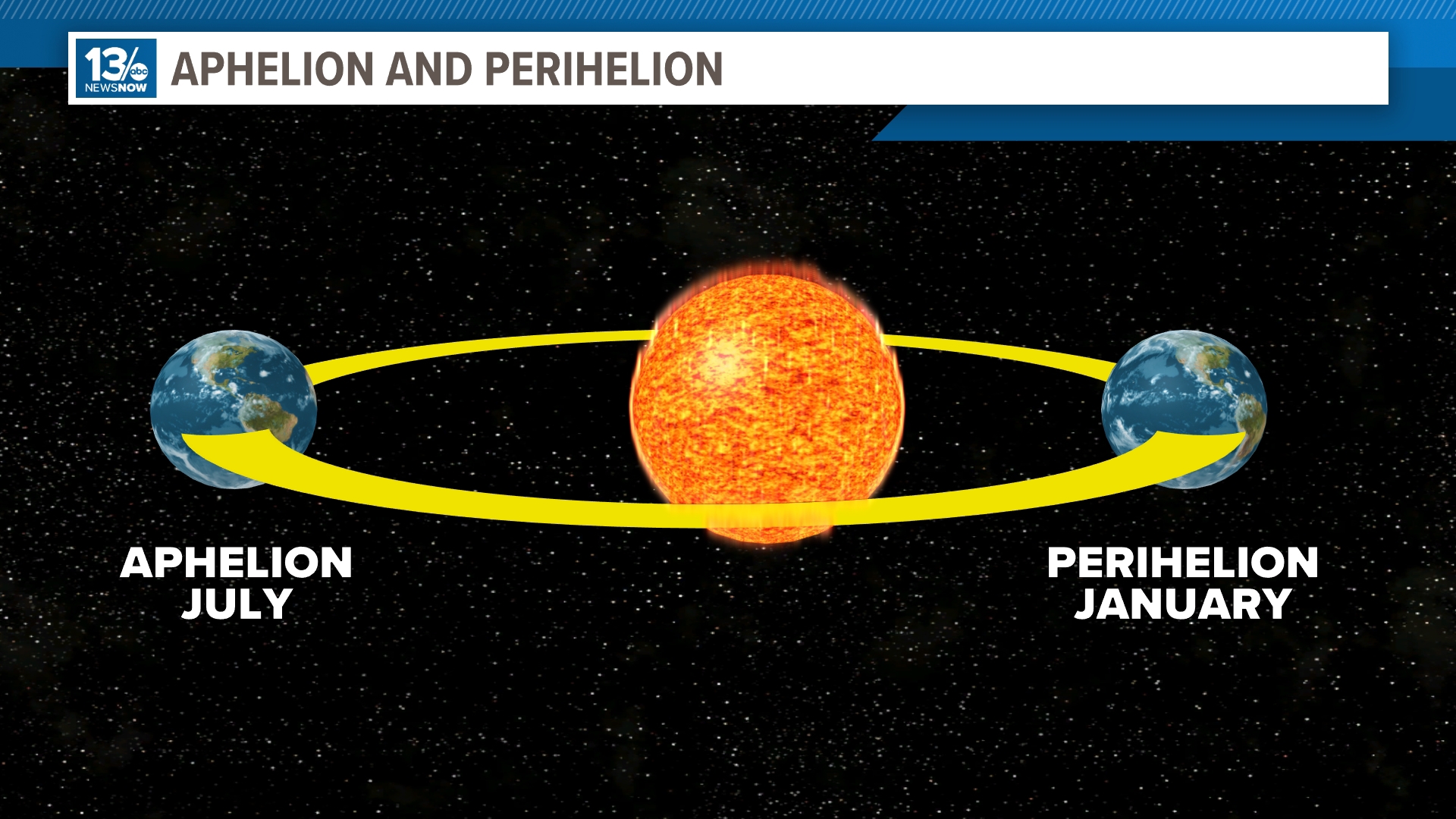NORFOLK, Va. — Here we are, at a special point in our year-long journey around the sun! Although to be fair, it's probably something you might not have heard of before.
It's called aphelion and it's when the Earth reaches its farthest distance from the sun in its annual orbit. Aphelion Day 2024 occurred early in the morning, at exactly 1:06 a.m. EDT, on Friday, July 5.
Aphelion comes from two Greek words "apo" and "helios," meaning away and sun. This occurs because the Earth's orbit is not a perfect circle but rather an ellipse, or oval, with the sun located at one of its foci.
Since the Earth's orbit is not a perfect circle, there is more than a 3-million-mile difference between the distance at aphelion and perihelion. Perihelion is the closest point in the Earth's orbit to the sun, which occurs every year in early January.
The change in distance from the sun plays a minimal role in our climate compared to other factors such as the axial tilt -- which is responsible for our seasons -- and atmospheric conditions.
The Earth is tilted on its axis 23.5°. Right now, the northern hemisphere is tilted toward the sun, meaning that we get more direct sunlight than the southern hemisphere, which is currently in the middle of winter. In six months when we are at perihelion, the northern hemisphere will be tilted away from the sun, giving us winter, while the southern hemisphere will receive a more direct sunline for their summer.

